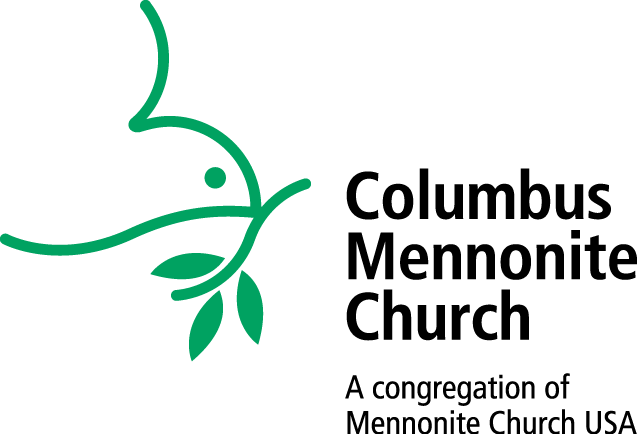The glory of the seed | Lent 5 | 22 March 2015
Text: John 12:20-33
One of the things in the back of my mind this Lent has been wondering whether we are having too much fun. It can be one of the more somber times of year, but this Praying with Creation theme has been lively. Personally, it’s not every week I get to use some of the sermon prep time to brush up on the history of the domestication of cattle, or look at images of ancient cave paintings or a huge cute kitten painted on the remaining wall of a bombed out building. The fact that various children want to come up and play with our worship visuals only confirms that there is an underlying stream of joyfulness going on. It’s good inviting all these creatures and elements of creation into our hermeneutical community. Last week Mark even managed to find a way to make serpents welcome guests, teaching us their wisdom, with their need to shed their outer skin, which doesn’t grow, to make room for the rest of their continuously growing selves. Throw in insightful daily devotionals from different members, a wildly successful comforter knotting party, and a much deserved party celebrating Paul Swartzentruber’s long service to the congregation, and the season has been an all-around good time.
And now, on cue with the official arrival of spring, warming weather, and the annual time of inflated aspirations that this year we will plant our best garden ever and it will be awesome, we turn our attention toward seeds.
It doesn’t take long reading into John’s gospel to recognize that John is…different than the other three gospels. Among John’s many differences is that one of Jesus’ main teaching styles, the telling of parables, is all but absent. Those earthy teachings that draw wisdom from the natural world. John – What…
Recognizing What’s Killing Us | Lent 4 | 15 March, 2015
Texts: Numbers 21:4-9; John 3:14-21
In the last seven months of serving here at Columbus Mennonite, I have been asked the same question a number of different times, “Do you ever get tired of being the gay pastor?” Even though I don’t think I’ve given the same answer to any of the many people who have asked this question, I think I’ve finally decided on an answer that feels right to me. So here and now, once and for all, hear my reply: Do I ever get tired of being the gay pastor? It sure beats the alternative.
You see, I used to answer this question in a lot of different ways because I constantly found myself trying to live in the tension between, on the one hand, recognizing that being the “gay pastor” is something that is immensely meaningful and life-giving in important ways, not just for me but for lots of other people. I don’t ever want to downplay the fact that I believe what Columbus Mennonite has done in calling me to serve as your pastor is part of a movement towards more just relationships with the LGBTQ community. It is truly something to celebrate.
But on the other hand, there are lots of instances where I wish I could cast off that identity. For one thing, it’s not like I come to work everyday and sit at my gay desk and answer my gay phone and use my gay computer to plan my gay Sunday School lessons. Being the gay pastor is something to celebrate, but it’s also something very ordinary.
And there are plenty of other instances where I wish I didn’t have to be the “gay pastor”: Every time I feel the need to justify my existence in yet another religious setting. Every time another person asks me,…
You…and your cattle | Lent 3 | 8 March 2015
Texts: Exodus 20:8-11; John 2: 13-22
If you ever want to see an aurochs, you’ll have to go to a museum. When you do, you’ll be looking at a set of assembled bones.
If you’re extremely fortunate, or have some amazing connections, you could witness depictions of the aurochs on the cave walls of Lascaux, France, a gift from ancient artists, accidently discovered 75 years ago by four teenage boys, preserved for almost 20,000 years.
But hardly anyone’s allowed in there anymore, too much humidity and light. A more likely opportunity would be to watch the stunning documentary from Werner Herzog, “Cave of forgotten dreams,” which gives rare video footage of these kinds of paintings.
The aurochs once had a range across Europe and Asia and North Africa, that stretched from the western most parts of present day Portugal and Spain to the East coast of China and the Koreas. At some point, the story of the aurochs and story of the human intersected and merged. Aurochs became a reliable source of meat for hunters, a source of inspiration for artists. About 8-10,000 years ago, in at least two separate locations, India and the Near East, people began selecting the traits of aurochs that they found most useful, forming an even tighter bond of interdependence with this creature.
The aurochs is the ancestor of domesticated cattle – minor and intentional changes over generations resulting in the different breeds of cows we have now. Open your refrigerator and you’ll likely encounter many products for which you can thank the aurochs. That gallon of milk. All that cheese without which none of our children would have survived toddlerhood. Yogurt, butter, cream, sour cream, and, of course, beef. And, in the freezer, ice cream. Thank you aurochs. Even if you’re a vegan, the ghost of…
Surveying the land from eight angles | Lent 2 | 1 March 2015
Texts: Genesis 17:1-8; Mark 8:31-38
1.) Promised land
When Abram was 99 years old, he was old. The first time Al Bauman had a birthday when I was in Columbus I asked him how old he was, and he said, “Almost 100,” after which he went off somewhere to climb a ladder and fix something. Al was joking, of course, but for Abram, this was no joke. He was almost 100, the end more in sight than it had ever been.
You learn to let go of a lot of things by that age, I suppose. A lot of friends and family you’ve outlived. A lot of unfulfilled hopes. If you don’t learn to let go, likely you don’t reach that age. But Abram still hung on to one haunting concern, unresolved and now all but impossible to be fulfilled. At a time when children, and sons specifically, were how you lived on after death – not just in perpetuating your own DNA but in whether or not your name was remembered and honored and carried forward – Abram and his wife Sarai were childless. The entire story of the Jewish people, the foundation of the Christian narrative, is initiated by an impossible promise made to an aging couple – a covenant between Yahweh, Abram and Sarai, who are renamed Abraham and Sarah to reflect the new future opening up in front of them. They will have a son. And not only that, but they will have land on which to grow. God Almighty says, “And I will give to you, and to your offspring after you, the land where you are now a migrant, all the land of Canaan, for a perpetual holding; and I will be their God” (Genesis 17:8).
2.) Our land
There’s something empowering about having access to land, even…
Taking the plunge | Lent 1 | 22 February 2015
Texts: Genesis 9:8-17; Mark 1:9-15
Two weeks ago Katie G ended her sermon by introducing us to a phrase that comes out of music theory: “Participatory discrepancies.” Participatory discrepancies are the human element in community and specifically, singing and music making, when each voice participates through the same score on the page, but adds its own variance and unscripted nuances. When we do it well, Katie noted, it can produce a meaningful disunity, which actually turns out to be a pretty good basis for community.
As someone not raised singing four part harmony, but who has spent much of my adult life only somewhat successfully trying to get up to speed on such things, I’m keenly aware of the participatory discrepancies I contribute to any song we sing, and am always a little surprised and grateful that the disunity turns out to be meaningful nonetheless.
And since we are in the mode of learning new vocabulary, I thought we could start the season of Lent off with another contribution, a phrase not completely unrelated to the previous one. Ready for it? Hermeneutical community. The word “hermeneutics” contains the name of the Greek god Hermes who was a messenger between the divine and human realms. Hermeneutics is the art of interpretation, how a text or story from the past carries its meaning, its message, into the present. Since its beginnings, a stream of the Anabaptist/Mennonite tradition has placed great significance on the hermeneutical community – the gathered body of believers who, together, do the work of interpretation in how we understand scripture and the life of faith. The hermeneutical community seeks to avoid the danger of surrendering interpretation to a group of elites who declare truth from on high, to be accepted by all. It also seeks to avoid the opposite danger of…

